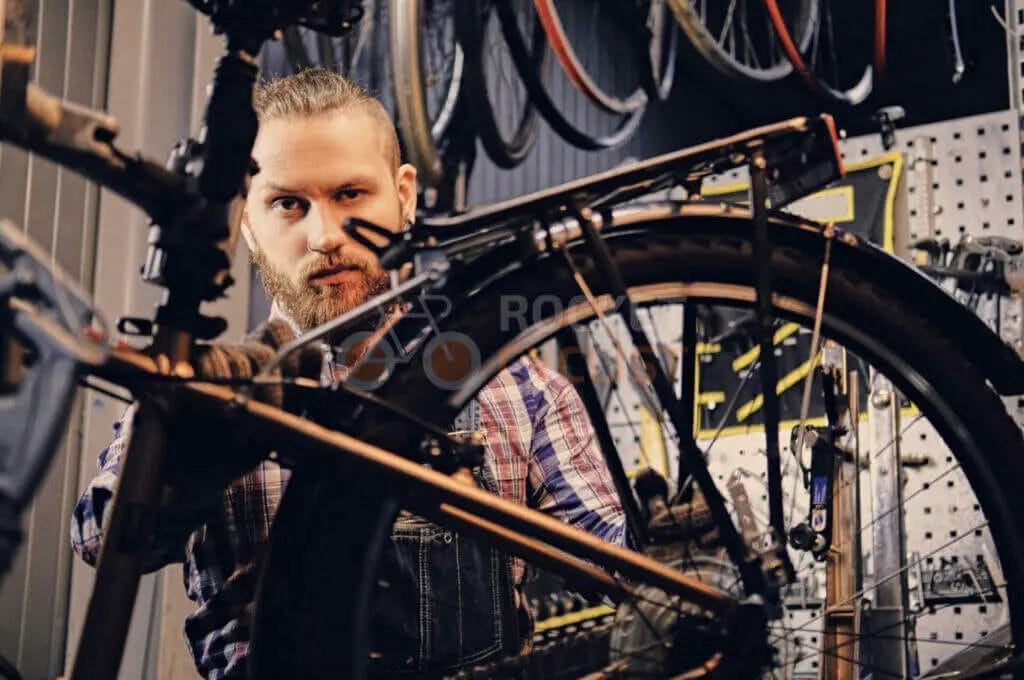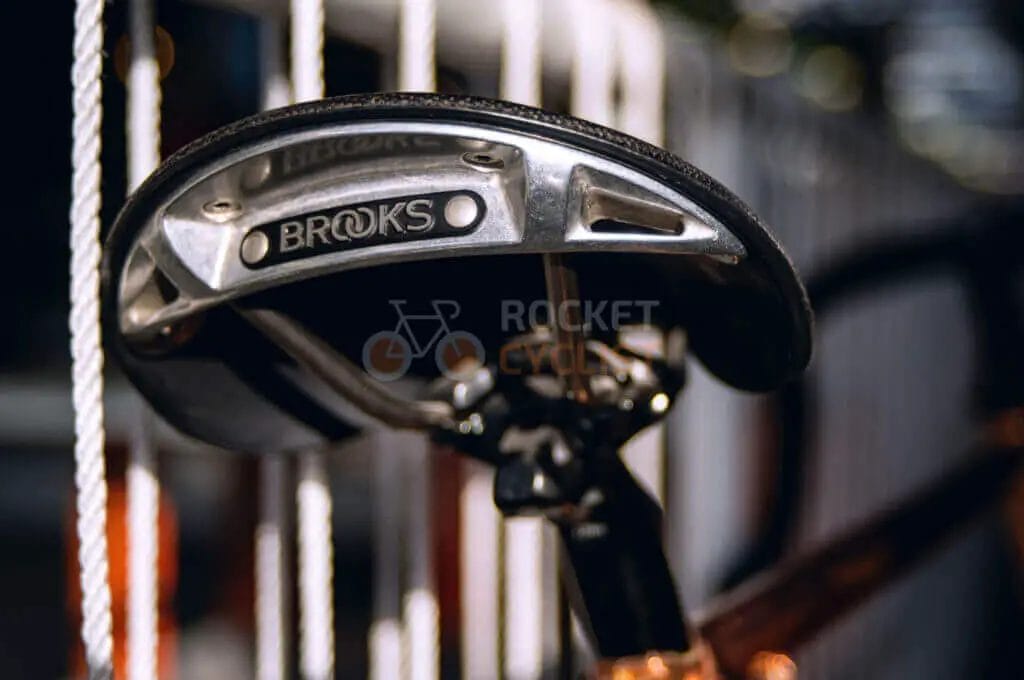Last Updated on February 9, 2024 by Vinson Lozano

Importance of a Comfortable Bike Seat
Having a comfortable bike seat is crucial for every cyclist. It is the primary point of contact between your body and the bike, and can greatly impact your overall riding experience. A comfortable bike seat can prevent discomfort, pain, and numbness during long rides, allowing you to focus on enjoying the ride instead of constantly adjusting your position. Investing in a high-quality, well-padded seat that suits your body type and riding style will provide the necessary support and cushioning to reduce the strain on your sensitive areas. A comfortable bike seat will not only enhance your comfort but also contribute to better performance and improved overall cycling experience.
Benefits of a comfortable bike seat
A comfortable bike seat offers numerous benefits for riders. Firstly, it enhances overall comfort during rides, allowing you to focus on your performance rather than discomfort or pain. This translates to longer and more enjoyable rides. A well-padded seat also helps to reduce pressure on sensitive areas such as the sit bones and perineum, preventing numbness and reducing the risk of saddle sores. A comfortable seat can also improve your riding efficiency, as you can maintain a stable and balanced position without constantly shifting to alleviate discomfort. With a comfortable bike seat, you can optimize your pedal stroke, leading to better power transfer and improved performance on the bike.
Consequences of an uncomfortable bike seat
Riding on an uncomfortable bike seat can have several negative consequences. Firstly, it can cause discomfort and pain during your rides, making them less enjoyable and potentially discouraging you from cycling altogether. An uncomfortable seat can also lead to numbness and tingling in your lower extremities, as it puts pressure on sensitive areas such as your sit bones and perineum. Prolonged pressure on these areas can result in saddle sores, which can be painful and may require time off the bike to heal. Additionally, an uncomfortable seat can affect your riding posture and lead to improper alignment, causing strain on your back, hips, and knees. It’s important to prioritize your comfort and invest in a suitable bike seat to avoid these consequences.
Factors to Consider When Choosing a Bike Seat

When choosing a bike seat, there are several factors you should consider to ensure maximum comfort and performance. Here are a few key factors to keep in mind:
- Bike seat size and shape: The size and shape of the seat should align with your body type and riding style. Seats come in different widths and lengths, so it’s essential to find one that fits the dimensions of your sit bones.
- Bike seat material and padding options: Look for a seat with high-quality materials and sufficient padding to provide cushioning and support. Different materials offer different levels of durability, breathability, and moisture-wicking properties.
- Cutout or no cutout: Some seats come with a cutout or groove in the center that helps relieve pressure on sensitive areas. Choose a seat with or without a cutout based on personal preference and comfort.
- Gender-specific options: Women’s bike seats are often designed to accommodate the wider pelvic structure and provide additional support for the sit bones.
By considering these factors, you can find a bike seat that meets your comfort needs and enhances your cycling experience.
Bike seat size and shape
When choosing a bike seat, finding the right size and shape is crucial for your comfort. The seat should align with your body type and riding style. First, consider the width of the seat. Choose a width that matches the distance between your sit bones. A seat that is too narrow will cause discomfort, while one that is too wide may cause rubbing or chafing. Next, consider the shape of the seat. Some seats have a flatter profile, while others have a more curved shape. The shape should provide support to your sit bones and distribute your weight evenly. Remember, everyone’s anatomy is different, so it’s essential to find a seat that suits your individual needs.
Bike seat material and padding options

When it comes to bike seat material and padding options, there are a few factors to consider that can greatly impact your comfort and performance. Here are some popular options to help you find the perfect fit:
- Material: Bike seats are typically made from either synthetic materials such as nylon or synthetic leather, or natural materials like genuine leather. Synthetic materials are often more durable and easier to clean, while leather options offer a more comfortable and premium feel.
- Padding: The level of padding in a bike seat can vary greatly. Some seats have minimal padding for a firmer feel, while others have thicker padding to provide extra cushioning. Choose a level of padding that suits your personal preference and the type of riding you will be doing.
- Cutouts and Ventilation: Some seats feature cutouts or ventilation channels to relieve pressure on sensitive areas and increase airflow. These features can provide additional comfort, especially during longer rides or hot weather.
Remember, finding the right balance of materials, padding, and ventilation is crucial for optimal comfort and performance on your bike. Consider testing out different options to find the one that suits your needs best.
Proper Bike Seat Adjustments
When it comes to maximizing comfort and performance on your bike, making proper adjustments to your bike seat is essential. Here are some key factors to consider when adjusting your bike seat:
- Adjusting bike seat height: The height of your bike seat should allow for a slight bend in your knee when your foot is at the bottom of the pedal stroke. This will help prevent strain on your knees and optimize power transfer.
- Bike seat tilt and fore/aft position adjustment: The angle and position of your seat can greatly impact your comfort. Adjust the tilt to a position that supports your body’s natural alignment and allows for even weight distribution. Experiment with the fore/aft position to find the sweet spot that provides the most comfort and power.
By making these adjustments, you can fine-tune your bike seat to fit your body and enhance your overall riding experience.
Adjusting bike seat height
To find the optimal height for your bike seat, start by placing your heel on the pedal with your leg fully extended. Adjust the seat height so that there is a slight bend in your knee when your foot is at the bottom of the pedal stroke. This position allows for efficient power transfer and minimizes strain on your knees.
When your seat height is too low, you’ll risk overextending your knees, leading to discomfort and potential injury. On the other hand, if your seat height is too high, you’ll experience decreased power output and potential discomfort in your hips and lower back.
Finding the right seat height is crucial for maximizing comfort and performance during your rides. Take the time to experiment and make adjustments until you find the sweet spot that works for your body.
Bike seat tilt and fore/aft position adjustment

When it comes to finding the sweet spot for your bike seat, it’s not just about the height. You also need to consider the tilt and fore/aft position of the seat. The tilt of the seat refers to its angle, while the fore/aft position refers to how far forward or backward the seat is positioned on the seat post.
Finding the right tilt and fore/aft position is important for comfort and performance. Here’s how to make these adjustments:
- Tilt: Start with a level seat and make small adjustments to find the most comfortable angle for you. A slight tilt forward can help prevent sliding forward, while a slight tilt backward can provide more support for your lower back.
- Fore/aft position: Position your seat so that your knee is directly over the pedal axle when the crank arms are parallel to the ground. This ensures proper leg extension and minimizes strain on your knees.
Remember, everyone’s body is different, so it may take some trial and error to find the perfect tilt and fore/aft position for you. Take the time to experiment and make adjustments until you find the most comfortable and efficient setup for your rides.
Tips for Maximizing Comfort during Cycling
To maximize comfort during cycling, there are a few tips you can follow:
- Invest in padded shorts: Wearing padded cycling shorts can provide extra cushioning and reduce friction between your body and the bike seat. Additionally, using chamois cream can further prevent chafing and irritation.
- Stand up and shift positions: While riding, periodically stand up and shift your weight from side to side. This helps relieve pressure points and prevents discomfort from building up in one area.
- Adjust your bike seat height: Ensuring that your bike seat is at the proper height can help prevent strain on your joints and muscles. Follow the steps mentioned earlier to find the right seat height for you.
Remember, comfort is key when it comes to enjoying your cycling experience. Incorporating these tips will help you have a more enjoyable and pain-free ride.
Padded shorts and chamois cream
When it comes to maximizing comfort during cycling, investing in padded shorts can make a world of difference. These shorts are designed with special padding in the seat area to provide extra cushioning and reduce friction between your body and the bike seat. Look for shorts with high-quality chamois padding for optimal comfort. Additionally, using chamois cream can further enhance your comfort. This cream helps prevent chafing and irritation by reducing friction and keeping your skin moisturized. Applying a small amount of chamois cream to your padded shorts or directly onto your skin can greatly improve your riding experience. So, gear up with padded shorts and chamois cream to ensure a smooth and comfortable ride every time.
Standing up and shifting positions while riding
To maximize comfort during cycling, it’s important to not stay in one position for too long. Standing up and shifting positions while riding can alleviate pressure and prevent discomfort. When you stand up, your weight is distributed differently, giving your sit bones a break and allowing blood flow to circulate. Additionally, shifting positions while sitting can also help alleviate pressure points and redistribute weight. Try to stand up and shift positions every 15-20 minutes during longer rides. This can also help prevent numbness and fatigue in your lower body. Remember, a little movement goes a long way in keeping you comfortable on your bike seat.
Improving Performance with the Right Bike Seat
Choosing the right bike seat can not only enhance your comfort, but also improve your performance during cycling. A well-fitting seat allows for better power transfer and efficiency, leading to increased speed and endurance. When your seat is properly aligned with your body, you can maintain a more aerodynamic position, reducing wind resistance and enabling you to ride faster. Additionally, a comfortable seat reduces discomfort and prevents distractions, allowing you to stay focused on your performance. Investing in a high-quality bike seat that suits your riding style and body type will undoubtedly contribute to a more enjoyable and rewarding cycling experience. Choose wisely and witness the positive impact on your performance.
Bike seat and performance correlation
When it comes to performance, your bike seat plays a crucial role. A properly fitting seat can improve your power transfer and efficiency, resulting in increased speed and endurance. By aligning your seat with your body, you can maintain a more aerodynamic position, reducing wind resistance and allowing you to ride faster. Additionally, a comfortable seat reduces discomfort, allowing you to stay focused on your performance and push through challenging rides. The right bike seat can also prevent numbness and pain, keeping you in the saddle for longer periods. So, investing in a high-quality seat that suits your body type and riding style can have a significant impact on your overall performance and enjoyment of cycling.
Reducing discomfort for longer cycling sessions
To reduce discomfort during longer cycling sessions, there are several strategies you can implement. One effective method is to invest in padded shorts or bibs, which provide extra cushioning and support for your sit bones. These shorts are designed to minimize friction and chafing, allowing you to ride for extended periods without discomfort. Additionally, using chamois cream can further reduce friction and prevent saddle sores.
Another tip is to occasionally stand up and pedal, shifting your weight and giving your body a break from the pressure of the seat. This helps to relieve any discomfort and allows for better blood circulation. You can also experiment with different hand positions on the handlebars to distribute your weight more evenly and reduce pressure on specific areas. By implementing these strategies, you can enjoy longer rides without compromising your comfort.
Conclusion
In conclusion, finding the right bike seat is essential for maximizing your comfort and performance on the bike. A comfortable seat not only prevents discomfort and pain but also allows you to ride for longer distances without hindrance. Factors such as seat size, shape, material, and padding should be considered when choosing a seat that suits your needs. Proper adjustments, including seat height, tilt, and fore/aft position, also play a crucial role in ensuring optimal comfort and performance. By investing in padded shorts or bibs, using chamois cream, and periodically standing up and shifting positions while riding, you can further enhance your comfort during longer cycling sessions. Remember, finding the sweet spot for your bike seat is key to enjoying every ride to the fullest.
Comparison of different bike seat options
When it comes to choosing a bike seat, there are several options available in the market. Here is a comparison of different bike seat options to help you make an informed decision:
- Standard bike seat: These seats are typically found on most standard bikes and provide basic comfort and support.
- Gel-infused bike seat: Gel seats provide added cushioning and can help to reduce pressure points, making them a popular choice for riders seeking extra comfort.
- Cut-out bike seat: These seats feature a cut-out or groove in the center, which helps to relieve pressure on sensitive areas and is often preferred by riders who experience discomfort in the perineal area.
- Racing bike seat: Racing seats are designed to be lightweight and aerodynamic, providing a narrower profile and minimal padding. They are best suited for experienced riders seeking maximum performance.
- Wide bike seat: Wide seats offer a larger surface area and increased support, making them ideal for riders who prefer a more upright riding position or have a wider sit bone distance.
When choosing a bike seat, consider your riding style, body type, and personal preferences to find the option that best suits your needs. Remember, comfort is key to enjoying your rides to the fullest.
Frequently Asked Questions about bike seat comfort and performance
- Are gel seats the most comfortable option?
Gel seats can provide extra cushioning, but comfort is subjective. It’s best to try out different seat options to see what works best for you.
- How do I know if a cut-out seat is right for me?
If you experience discomfort or pressure on sensitive areas, a cut-out seat can help relieve those issues. Give it a try and see if it improves your comfort during rides.
- Will a wide seat automatically be more comfortable?
A wide seat can provide more support, but it may not be the best choice for everyone. Consider your riding style and sit bone width to determine if a wider seat would be comfortable for you.
- Can a bike seat improve my performance?
The right bike seat can improve your performance by providing the necessary support and reducing discomfort. It allows you to maintain a proper riding position and focus on your cycling technique.
- How do I choose the right bike seat for my body type?
Consider factors like sit bone width, riding position, and personal preferences. Some bike shops offer seat fitting services, which can help determine the best seat for your body type.
Remember, comfort is crucial when it comes to bike seats. Don’t hesitate to experiment and find the seat that allows you to ride comfortably and enjoy your cycling adventures.


